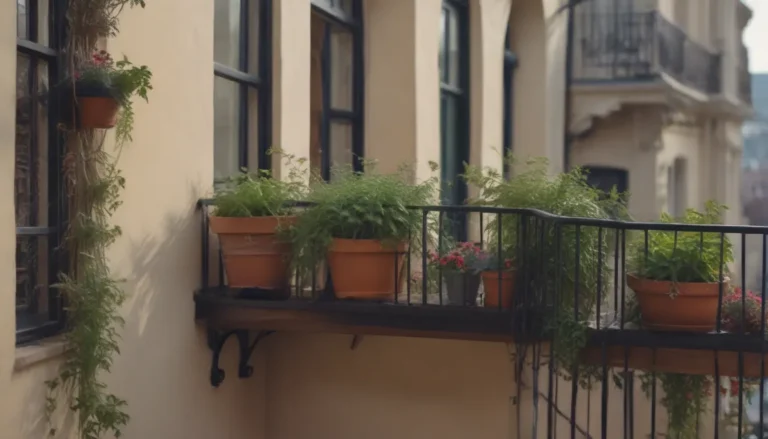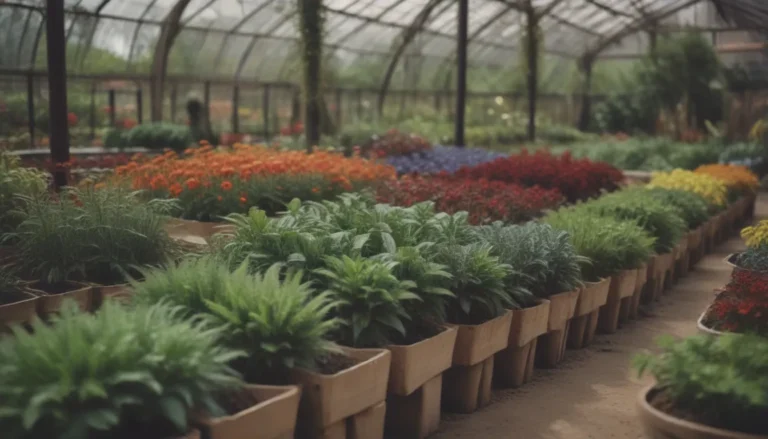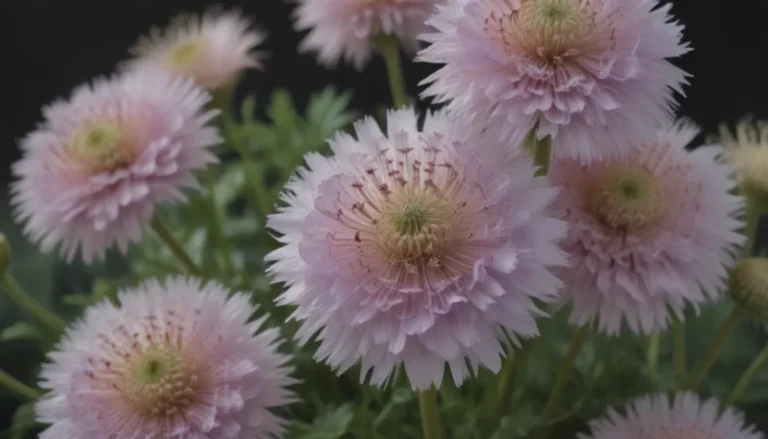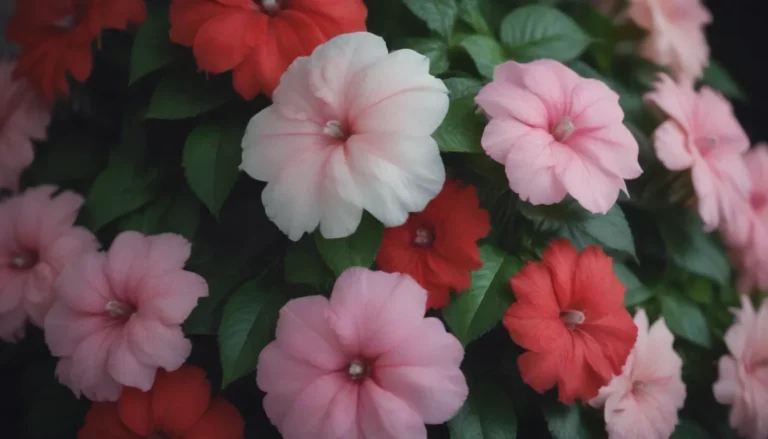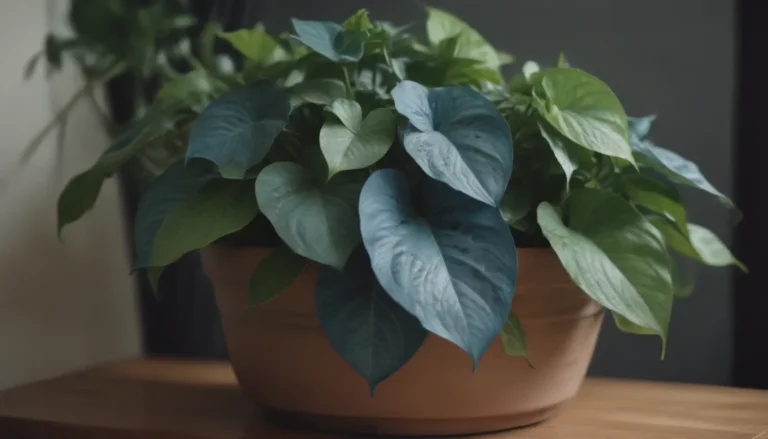The Ultimate Guide to Growing Beautiful Flowers from Seed
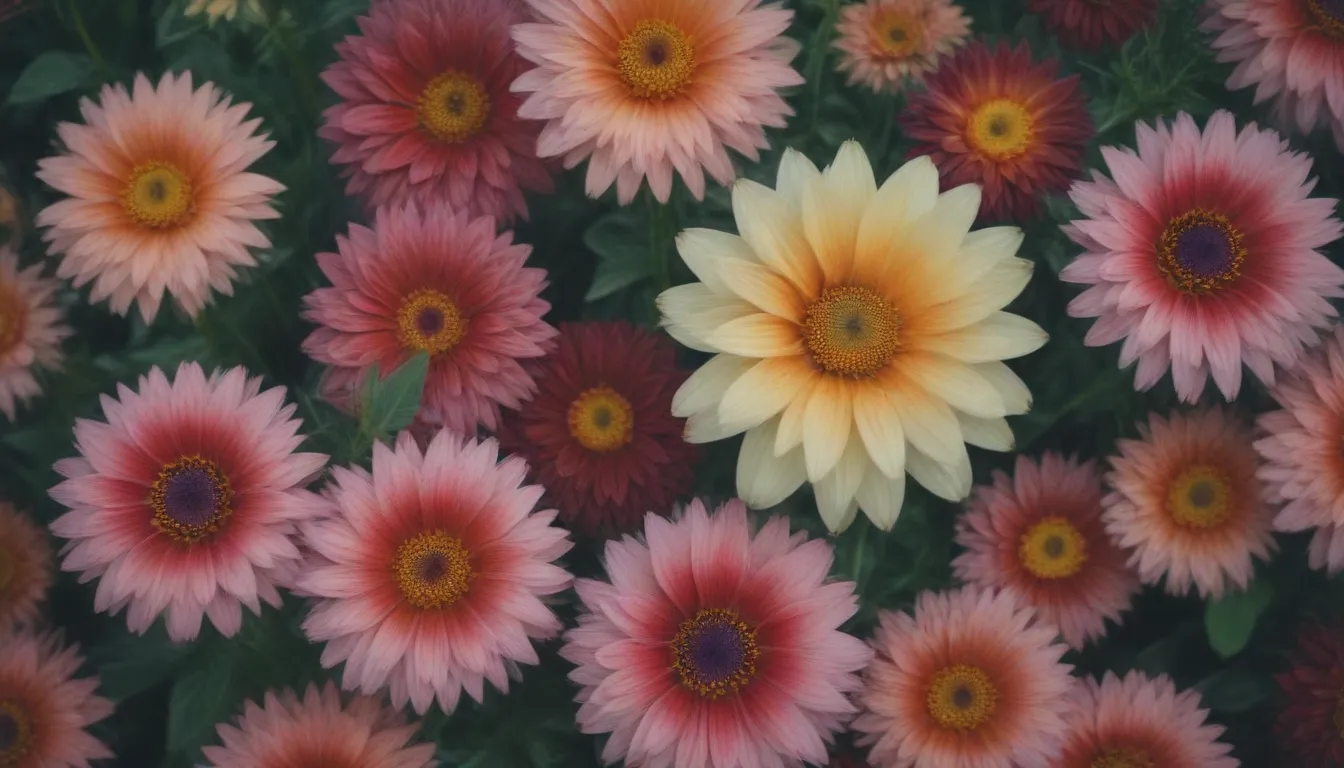
If you are looking to create a vibrant and colorful garden without breaking the bank, growing flowers from seeds is a fantastic option. Not only is it cost-effective, but it also provides you with a wide variety of plants that may not be available at your local garden center. Whether you are a seasoned gardener or a novice, growing flowers from seed can be a rewarding experience that allows you to witness the entire life cycle of your plants. In this comprehensive guide, we will explore the 14 easiest flowers to grow from seed, along with tips and tricks to ensure your garden thrives.
Why Grow Flowers From Seed?
Growing flowers from seed is a fun and rewarding process that allows you to have complete control over your garden. Here are some benefits of starting your garden from seeds:
- Cost-effective: Seeds are generally more affordable than live plants, allowing you to fill your garden with a wide variety of flowers without breaking the bank.
- Variety: By growing from seed, you have access to a wider range of plant varieties and colors that may not be available as live plants.
- Educational: Watching seeds germinate and grow into beautiful blooms can be a fascinating and educational experience for gardeners of all ages.
- Self-seeding: Many flowers will self-seed, producing bonus plants for the following year without any additional effort on your part.
Tips for Growing Flowers From Seed
Before we delve into the 14 easiest flowers to grow from seed, here are some general tips to help you achieve success in your garden:
- Start early: Begin reading seed catalogs online in January to find the best options for your area and start planning your garden.
- Plant at the right time: Make sure to plant your seeds at the appropriate time for your growing zone to ensure optimal growth.
- Provide adequate care: While many flowers from seed are low-maintenance, they still require proper watering, sunlight, and soil conditions to thrive.
- Save seeds: At the end of the season, collect and save seeds from your flowers to replant the following year and expand your garden.
Now, let’s explore the 14 easiest flowers to grow from seed and how you can cultivate them in your garden:
Bachelor’s Button (Centaurea cyanus)
- USDA Growing Zones: All zones
- Color Varieties: Blue
- Sun Exposure: Full sun
- Soil Needs: Well-drained
Bachelor’s Buttons are beautiful blue flowers that resemble miniature carnations and attract butterflies to your garden. These easy-to-grow annuals can be directly sown in your garden after the final spring frost or started indoors for early blooms. Once established, they require minimal care and will self-seed for future seasons, making them a delightful addition to any garden.
Calendula (Calendula officinalis)
- USDA Growing Zones: All zones
- Color Varieties: Yellow to orange
- Sun Exposure: Full sun to part shade
- Soil Needs: Well-drained
Calendulas are bright and cheerful flowers that make excellent container plants or garden edging. These versatile blooms can be directly sown in your garden or started indoors for earlier flowering. Calendulas self-seed easily and require moderate care, making them a low-maintenance choice for any garden.
Columbine (Aquilegia)
- USDA Growing Zones: All zones
- Color Varieties: Various colors
- Sun Exposure: Full sun to part shade
- Soil Needs: Well-drained
Columbines are showy perennials that bloom in a variety of colors in the spring and early summer. These flowers will self-seed and return year after year with minimal maintenance. Columbines can tolerate different growing conditions but prefer well-drained soil for optimal growth. By removing spent flowers, you can prolong their blooming period and enjoy these lovely blooms throughout the season.
Cosmos (Cosmos)
- USDA Growing Zones: All zones
- Color Varieties: Various colors
- Sun Exposure: Full sun
- Soil Needs: Well-drained
Cosmos are versatile annual flowers that make excellent cut flowers for bouquets and bloom throughout the summer. These low-fuss flowers can be directly sown in your garden after the final frost or started indoors for earlier blooms. Cosmos will self-seed and can tolerate poor soil conditions, making them an easy and rewarding choice for any garden.
Four O’Clocks (Mirabilis jalapa)
- USDA Growing Zones: All zones
- Color Varieties: Various colors
- Sun Exposure: Full sun
- Soil Needs: Moist, well-drained
Four O’Clocks are fragrant flowers that bloom from mid-summer to fall and prefer consistently moist soil. While they can be grown as perennials in warm climates, they work well as annuals in other regions. Four O’Clocks require minimal care beyond regular watering and will reward you with beautiful blooms throughout the season.
Marigolds (Tagetes)
- USDA Growing Zones: All zones
- Color Varieties: Various colors
- Sun Exposure: Full sun
- Soil Needs: Well-drained
Marigolds are classic annual flowers that bloom all summer with proper deadheading. By saving the seeds at the end of the season, you can easily replant them the following year for continuous blooms. Marigolds may require some afternoon shade in hot climates and consistent moisture to thrive.
Morning Glories (Ipomoea purpurea)
- USDA Growing Zones: All zones
- Color Varieties: Various colors
- Sun Exposure: Full sun
- Soil Needs: Well-drained
Morning Glories are annual vines that bloom from late summer onward and self-seed for future years. By starting the seeds indoors before the last frost, you can enjoy earlier blooms in your garden. Morning Glories require regular watering and occasional fertilization to thrive and produce their iconic flowers.
Moss Rose (Portulaca grandiflora)
- USDA Growing Zones: All zones
- Color Varieties: Various colors
- Sun Exposure: Full sun
- Soil Needs: Well-drained
Moss Roses are drought-tolerant flowers that make an excellent ground cover in sunny spots. These low-maintenance flowers are deer-resistant and rarely face pest or disease issues. Moss Roses can be directly sown in the garden after the last frost and will bloom throughout the summer until frost arrives.
Nasturtiums (Tropaeolum)
- USDA Growing Zones: All zones
- Color Varieties: Various colors
- Sun Exposure: Full sun
- Soil Needs: Well-drained
Nasturtiums are hardy flowers that can tolerate neglect and poor soil conditions. These edible flowers have a lovely fragrance and are often used in salads or as cut flowers. Nasturtiums thrive in dry soil but should be watered during extended dry spells and protected from the hot afternoon sun.
Shasta Daisies (Leucanthemum x superbum)
- USDA Growing Zones: All zones
- Color Varieties: White
- Sun Exposure: Full sun
- Soil Needs: Well-drained
Shasta Daisies are perennial flowers with a long blooming period from summer to fall. These efficient plants spread easily and require good soil drainage to thrive. By deadheading spent flowers and cutting back stems after the season, you can encourage further blooming and conserve the plant’s energy for the next year.
Sunflowers (Helianthus annuus)
- USDA Growing Zones: All zones
- Color Varieties: Yellow
- Sun Exposure: Full sun
- Soil Needs: Well-drained
Sunflowers are iconic annual flowers that bloom from late summer to fall and produce giant blooms. Plant the seeds directly in your garden after the final frost and protect them from strong winds. Save some of the seeds to replant the following year, covering a few seed heads with netting to prevent bird damage.
Sweet Alyssum (Lobularia maritima)
- USDA Growing Zones: All zones
- Color Varieties: White
- Sun Exposure: Full sun to part shade
- Soil Needs: Well-drained
Sweet Alyssum is a fragrant flower that blooms from spring to early summer and can be directly sown in your garden or started indoors for earlier flowering. These plants decline in heat but can be cut back to promote additional blooms in the fall or sown again for a second blooming period.
Sweet Peas (Lathyrus odoratus)
- USDA Growing Zones: All zones
- Color Varieties: Various colors
- Sun Exposure: Full sun to part shade
- Soil Needs: Well-drained
Sweet Peas are climbing annual flowers that make beautiful cut flowers but prefer cool soil conditions. Start the seeds indoors before the last frost to maximize the blooming period before the arrival of hot weather. Keep the soil consistently moist and provide compost or fertilizer for optimal growth.
Zinnias (Zinnia)
- USDA Growing Zones: All zones
- Color Varieties: Various colors
- Sun Exposure: Full sun
- Soil Needs: Well-drained
Zinnias are colorful annual flowers that thrive in hot weather and bloom from early summer to fall. Directly sow the seeds in your garden after the last frost for continuous blooms throughout the season. To encourage more blooming, deadhead spent flowers and provide good air circulation to prevent disease.
In Conclusion
Growing flowers from seed is a rewarding and cost-effective way to create a beautiful garden that brings joy and color to your outdoor space. By choosing easy-to-grow flowers like the ones mentioned above, you can cultivate a stunning garden with minimal effort and enjoy the process of watching your plants grow and bloom. Whether you are a beginner or an experienced gardener, growing flowers from seed is a fulfilling and educational experience that allows you to connect with nature and create a vibrant oasis in your backyard. So grab your seeds, roll up your sleeves, and get ready to grow a garden full of beauty and blooms!
